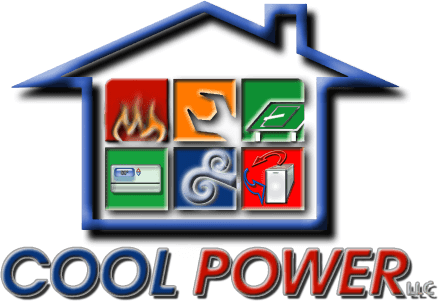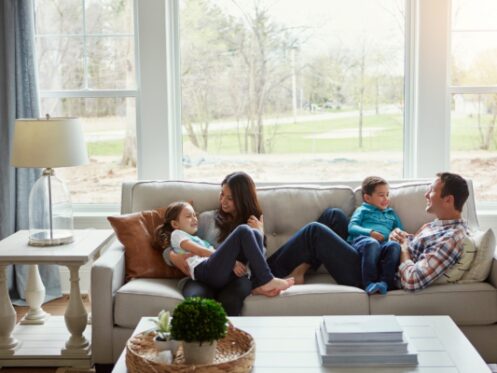After the temperatures start to rise in the spring, it can feel wonderful to head outdoors again and enjoy some sun. However, approximately 19 million Americans and 5 million children suffer from seasonal allergies. Symptoms such as a runny nose, itchy eyes, cough and scratchy throat can plague many people for much of the spring and summer. Heading indoors to find some relief is an option, but what do you do when your indoor air is full of pollen, dust, dander and other irritants?
Your HVAC system has a filter that can trap certain particulates before they enter back into your ductwork and then into your home. Unfortunately, there are plenty of allergens that can still make their way into your indoor air. If seasonal allergies and indoor air are a concern of yours, it may be time to consider air purification.
What is Home Purification?
Air purification devices are units that combine an internal filter along with a fan to pull in unwanted particles from the air that is in a specific room or your entire home. The filtered, clean air is then spread back into your home, improving your overall indoor air quality.
Home air purification can be achieved a few different ways. There are stand-alone units that are plugged into the wall of whatever room you’re looking to treat. The size of the purifier you purchase will determine how much square footage you can address. Some people choose to have a stand-alone air purifier in their bedroom or living room, where they spend the most time. That unit can be moved from one location to another. You can also purchase multiple units to use at the same time, and put them in different spaces.
You can also opt to have a whole-house air purification system installed onto your HVAC system. This will circulate all of the air in your home through one or more filters to remove particulates and allergens. That treated air will then be ventilated back into your home through ductwork.
Why Are Allergens Present in the Home?
Keeping your windows and doors closed as much as possible can reduce the number of allergen particulates that are present indoors, but there are many other ways that pollen from grass, flowers, trees, plants and animals can make their way indoors. If you’ve spent any time outdoors, you will inevitably bring allergens into your home on your clothing, shoes, skin and in your hair. Flopping down on the couch or crawling into bed without showering or putting on clean clothing will spread these allergens around your house.
Pollen can also come inside from the normal cracks and gaps that are around your home. Even a brand-new home will have some degree of air flow coming from around the frames of windows and doors. Being able to purify that air is ideal, so you don’t end up with all kinds of irritants inside of your HVAC system.
Different Air Purification Filters
In addition to the traditional flat filters that you use in your furnace, there are a few other types of air purification filters that can be found in units that scrub the air. This includes:
Extended Media Filters
A media filter is essentially a box-like unit that has a series of filters stacked on one another. This is something that is installed into the actual structure of your HVAC system to remove allergens and purify your indoor air. While flat filters need to be replaced every one to three months, an extended media filter can often go as long as one full year before needing to be replaced. It traps many more particles than would normally be removed by your standard HVAC system.
Electronic Filters
Electrostatic purification units are also installed onto your HVAC system. Air will pass through, and particles will become electrically charged by way of a high-voltage current. There will be oppositely charged collector plates that hold onto the particles, so they don’t get ventilated back into your home. These filters work extremely well on very small particles that would otherwise pass through flat filters and even extended media filters. The nice thing about these electronic filters is that they don’t have to be replaced. You simply remove the plates periodically and clean them off.
UV Filtration Units
If allergens are a main concern of yours but you also want to address germs, a home purification system with a UV feature may be something you want to consider. The UV light inside of these units will zap any bacteria or viruses, eliminating them from your indoor air. UV filtration can be used in addition to other filtration means.
Portable Air Filtration
If you don’t run your HVAC system very frequently in the spring and summer, then you might not feel like a whole-house unit is worthwhile for allergen removal. Freestanding units offer the ability to move it from one room to another based on your filtration needs. They can also be more affordable than having something installed onto your HVAC system if you’re on a budget.
The problem with some freestanding air purifiers is that they usually are equipped with HEPA filters. While HEPA filtration can remove some of the big particles from your air and are really effective for allergy sufferers, they won’t remove anything that is less 0.3 microns in size. This includes viruses, bacteria and volatile organic compounds. HEPA filters aren’t commonly used for a whole-house system because they require a strong fan to power air through them. If these are smaller particles are of concern to you, then one of the aforementioned types of filtration may be a better fit for your needs.
Home Humidification
In addition to removing allergens from the air inside of your home, you may also want to work with an HVAC professional to assess the amount of moisture that is inside of your indoor air. Having too high of a humidity level indoors can result in a higher allergen count. It also increases your risk of being exposed to things like mold spores. The recommended humidity level for a residential structure is between 40 and 50 percent. You can have a humidifier or dehumidifier installed onto your furnace along with an air purifier in order to further control the quality of your indoor air during peak allergy season. These two separate units may be used during different times of the year depending on what you need during different seasons.
Improving the indoor air quality in your home is a great way to reduce the number of allergens that you’re exposed to. While you can’t control what you’re exposed to when you’re outside, you have the ability to create a healthy and safe environment inside of your home where you can retreat to for relief. Contact Cool Power LLC for more information on how home purification can help you beat seasonal allergies.


